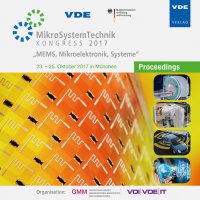High Intensity UV-LED Mask Aligner for Applications in Industrial Research
Conference: MikroSystemTechnik 2017 - Kongress
10/23/2017 - 10/25/2017 at München, Deutschland
Proceedings: MikroSystemTechnik 2017
Pages: 4Language: englishTyp: PDF
Personal VDE Members are entitled to a 10% discount on this title
Authors:
Schindler, Katrin; Leischner, Ulrich; Striebel, Thomas; Kaiser, Paul; Schoembs, Ulrike (SUSS MicroTec Lithography GmbH, Schleissheimerstr. 90, 85748 Garching, Germany)
Lopper, Christina (Fraunhofer IZM, Gustav-Meyer-Allee 25, 13355 Berlin, Germany)
Abstract:
Recent rapid technological progress in the field of UV-light emitting diodes promises great opportunities. Ecological UV-LED light sources can replace traditional mercury lamps with tremendous less power consumption, no hazardous waste and no need for special safety measures. Moreover, new processes and applications become possible thanks to the unprecedented flexibility in illumination control. Already today UV-LEDs offer a cost-effective, green and flexible replacement for Hg-lamps in main-stream water purification, counterfeit detection and curing applications. First benchtop lithography investigations with UV-LEDs date back to 2005. Since then many research teams working on a multitude of materials have demonstrated good print performance of UV-LEDs in all types of lithographic processes. However, they also showed that the limits of home-made benchtop setups needed to be overcome to qualify UV-LED illumination for commercial lithographic manufacturing. In this paper we show first results on a semi-automatic mask aligner with UV-LED illumination, SUSS MA/BA8 Gen4 Pro equipped with a UV-LED lamp house and MO Exposure Optics. The tool offers a customer-controllable spectrum with three wavelengths corresponding to the mercury i,g and h-line. The field-proven MO Exposure Optics guarantees a reliable smooth angular spectrum that can be fully customized. Full 8 inch wafers were exposed with the same high intensity and light uniformity as with standard mercury lamps. Broadband and single line exposures were performed on several standard processes. The resolution and appearance of the produced features compared well to traditional exposures with a mercury lamp. In addition we present an analysis of the eco-fingerprint of our UV-LED-lithography system. For a semi-automatic system used under typical research institute conditions the LED light source can survive a machine life-time. LEDs don't require warm up times and thus are switched on during exposure only. Moreover, low power consumption of the LEDs during operation and no need for nitrogen flow cooling also contribute to very low running cost and a green footprint. In summary, the lithography industry will greatly benefit from UV-LED illumination paving the way for future process innovations in a mercury-free and safe environment.


